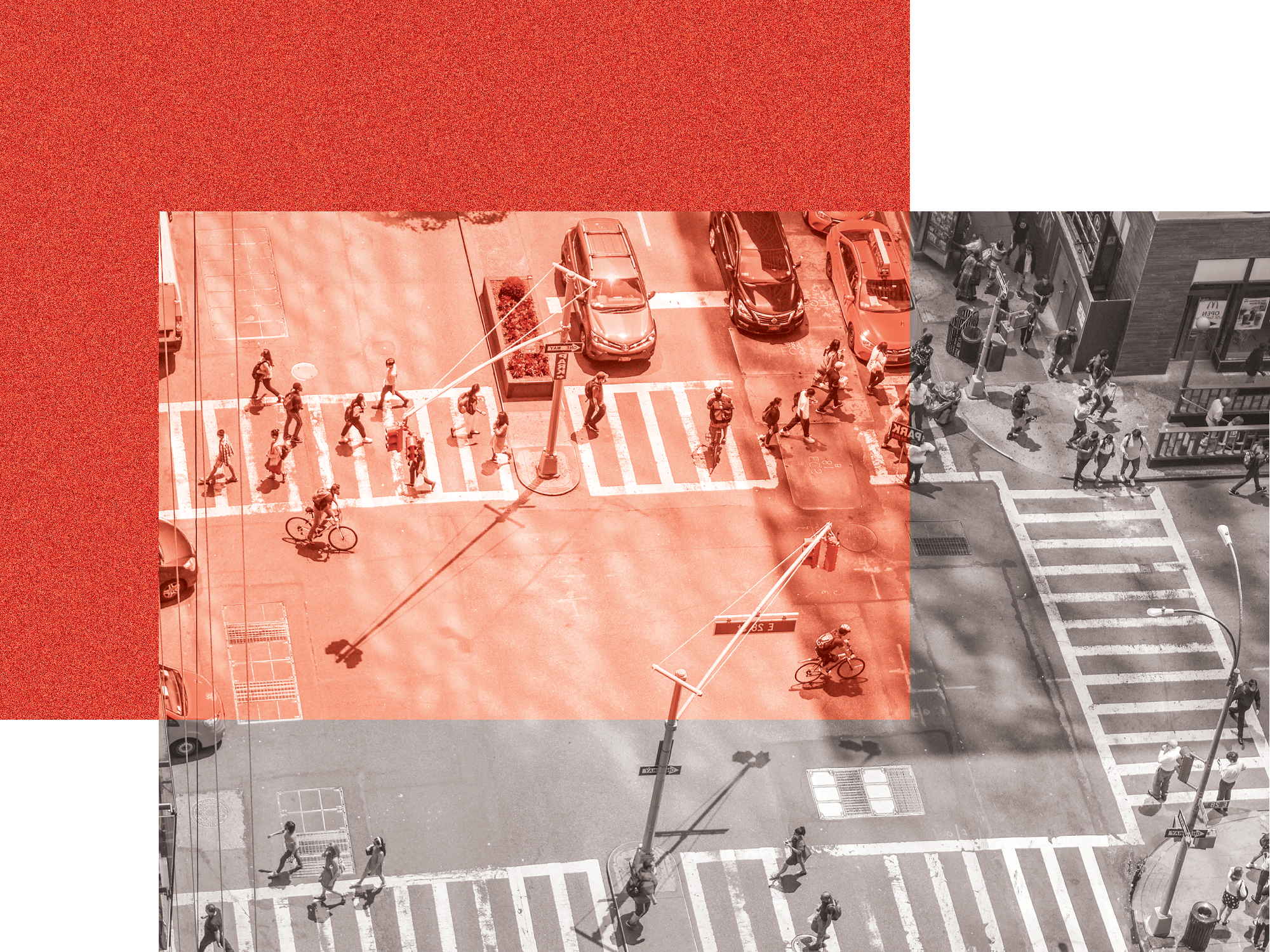This article appears in our October print issue. You can pick up a copy on newsstands around campus, or at our newsroom in room 520 in the University Center.
The Tishman Environment and Design Center office has overwhelmingly white walls with large glass windows looking out to New York’s Fifth Avenue. The first room to the right of the entrance belongs to Assistant Director Mike Harrington, whose walls are heavily decorated with environmental activism and awareness posters.
Harrington has spent the majority of this year representing the university in the Urban Design Forum Forefront Fellowship. The fellowship’s mission for 2019 was environmental justice, and Harrington and his team of 24 other fellows focused on the urban heat island effect in New York City.
“Urban heat, in terms of natural climate disasters, is the number one killer in this country. It’s not tornadoes, it’s not floods, it’s urban heat,” Harrington said. “You can pretty much predict how many people are going to die from this and the number one predictor, especially in New York City and some other cities, is being black.”
“Urban heat, in terms of natural climate disasters, is the number one killer in this country. It’s not tornadoes, it’s not floods, it’s urban heat,” Harrington said.
“The other predictor is your income. It’s an environmental justice thing, because mostly black people are affected by this and this is going to happen to them, but when we looked into it there was not a lot of investment in stopping this,” he said.
According to the EPA, urban heat island effect accounts for cities being 1.8 to 5.4 degrees fahrenheit warmer year round than nearby rural areas. This occurs as a result of cities having more cars emitting greenhouse gases, a higher density of people and the darkness of rooftops and streets that absorb and trap heat.
For decades now, this phenomenon has been taking a toll. About 100 deaths per year are associated with urban heat in New York City, predominantly in communities of color or low income communities due to factors including lack of shade or no air conditioning, according to the NYC Department of Health and Mental Hygiene. But as the planet’s temperature continues to increase in the face of climate change, New York City is slowly starting to address environmental injustices like urban heat.
A portion of the Forefront Fellowship was to cultivate policy and design recommendations for the city that could be implemented in one to two years. One recommendation Harrington and his team provided was getting the effects of urban heat out of the shadows in media.
“It’s not talked about because it’s not very visible. You can see floods and earthquakes but you can’t really see heat,” Harrington said. “So one of our recommendations was to work on media perceptions of heat.”
“It’s very low cost to hire a photographer and take photos during a heat wave of dangerous conditions or people that are vulnerable and the environments of people that are vulnerable to dying from heat,” he said.
most vulnerable to urban heat and environmental injustices. Data from www.NYC-EJA.org
In a city like New York—where millions of people need electricity, are producing waste and use transportation—environmental justice communities surrounding the city bear the front of
“New York City in particular is tied to the rest of the region, relying on communities outside the city to dispose of their waste, to provide energy, to even treat their sewage and deliver their goods. Without this regional infrastructure the city would not function,” Baptista said.
“Environmental justice communities are often referred to as ‘sacrifice zones’ where society’s polluting infrastructure and practices of environmental racism have segregated residents and industry into concentrated pockets,” she said. “These places exist so that the rest of society can live a comfortable distance from the consequences of their consumptive lifestyles.”
Shedding more light on environmental injustice through media and policy could be a step in the right direction to end it. According to Baptista, society cannot achieve sustainability and equality without correcting injustices, like urban heat, that inhibit communities from flourishing.
“Awareness not just of environmental justice communities but the solutions that these communities are proposing is critical to achieving a more just and sustainable world,” Baptista said.
“Awareness not just of environmental justice communities but the solutions that these communities are proposing is critical to achieving a more just and sustainable world,” she said.
The way Baptista sees it, New York City could be much more aggressive when it comes to laws that mandate pollution and waste. With NYC being globally influential city, it has the potential to be a model for the world when rebuilding environmental justice communities and mitigating climate change.
“Environmental justice communities have the lived experience of tackling multiple layers of inequality and implementing possible alternatives. The innovation and resilience of environmental justice communities provides useful insights to the rest of society about how to tackle the climate crisis,” Baptista said.
Alexandria Ocasio-Cortez is the U.S. Representative for New York’s 14th congressional district, which includes eastern parts of the Bronx and north-central Queens, two areas in New York City that notoriously experience environmental injustices. Along with California Senator Kamala Harris, Ocasio-Cortez drafted the Climate Equity Act in June of this year. The act is the third proponent of the Green New Deal, a resolution proposal to phase out fossil fuels and create new jobs in the country’s transition to clean energy, ultimately decreasing the US’s hand in climate change.
If brought into fruition, the Climate Equity Act will help rebuild communities affected by environmental injustice, ensuring they receive adequate attention from Congress looking forward.







